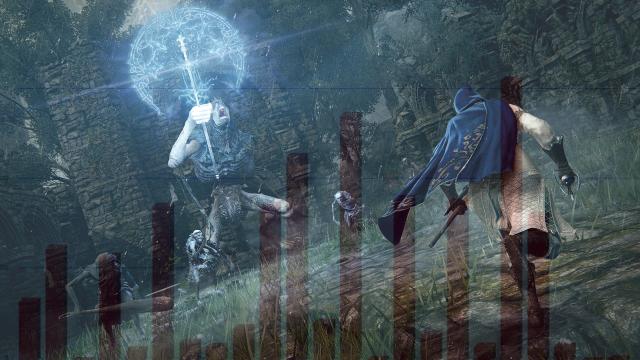As we all know, video games are judged on four criteria: The graphics, the gameplay familiarity, the price, and the length. But often times, the “video games media” conflates such objective judgements with corrupting elements of so-called artistic value and cultural impact. With games like the recently released, but woefully brief (well under 20 hours!) Cult Of The Lamb receiving inexplicably adulatory scores, something needs to be done. So forget all that. With this handy guide, we can help you never need to look at a review or Metascore again.
Too many arguments rage across Twitter (and maybe TikTok?) regarding the nature of a game’s value. Sadly, some people have more recently started to be swayed by rantings about a game’s emotional resonance upon a player’s psyche, or whatever pop-psych mumbo-jumbo they come up with. But to avoid all this, Kotaku has worked out the ideal format for rating games based on their true worth.
Remember, games are primarily priced based on how good they are. If everything’s working properly, a $US70 ($97) game obviously ought to be around twice as good as a $US35 ($49) game, although of course it’s not an exact science — percentages might be a few points off here and there. (But what about when a game gets discounted in a sale, or long after release, you might ask. You’re forgetting that as games get older, they lose value and importance, and this is therefore reflected in the pricing.)
But, the more important question here is, what do we mean by “good”? And that’s an important one, because it’s here that so many sites will allow subjectivity to creep in when reviewing games. Fortunately, our measurement requires no such invasion of one person’s opinions, but rather the cold, precise accuracy of mathematics.
(GAME LENGTH / PRICE) x NUMBER OF EMPLOYEES AT DEVELOPER
Let me break that down for you.
Some will have previously seen arguments saying the method of judging a game should simply be based on that “game length divided by price” system, with the higher the number, the better the game. But this actually leaves the whole system open to abuse, and fails to properly reflect the objective qualities of a game imbued by the player’s recognition of the development studio or publisher.
It might seem a fair way to do things when just considering a game like Far Cry 6, where you’d be dividing 25 by 60, and getting a stunning score of 0.42. But say some indie developer came along and made a 15-hour RPG, but sold it for $US3 ($4), you’d get a score of 3! The whole system falls apart when people cheat with incredibly low prices. This is resolved by multiplying any score by the number of people who worked on the game, as a recognition of the greater quality that comes from AAA development. In this case, our solo-developed indie game stays at 3, but Far Cry 6 gets the far more realistic 1,995. You can see the importance.
This allows us to put recent games like Cult Of The Lamb into perspective, after some recent controversy, with a lot of wokerati games “journalists” screaming and crying about a Steam review that was brave enough to call out its paltry 17 hour run-time. At $US24 ($33)-ish, with a three-man development team, that recognises Cult Of The Lamb as the 2.1 game it truly is.
Now, the canny developers at Supergiant figured out how to get around the limitations of their small team by not only making their game Hades nigh-infinitely replayable, but also cheating the sum with the suggestion of being a “supergiant” studio. Even though they don’t get a huge multiplier on the “number of employees at developer” part of the formula, they’ve successfully deceived enough people into think the game is better than it possibly can be, just by exaggerating the size of their team.
However, such exceptions are few and far-between. With this truly objective and fact-based method of scoring games, it allows us to see where real value can really be found, where proper games like Rainbow Six Extraction and Balan Wonderworld score in the thousands, but these ridiculous “progressive” belly-button-inspecting art games are recognised as the single-digit games they are. Especially if they have the temerity to charge in double-figures.

Leave a Reply